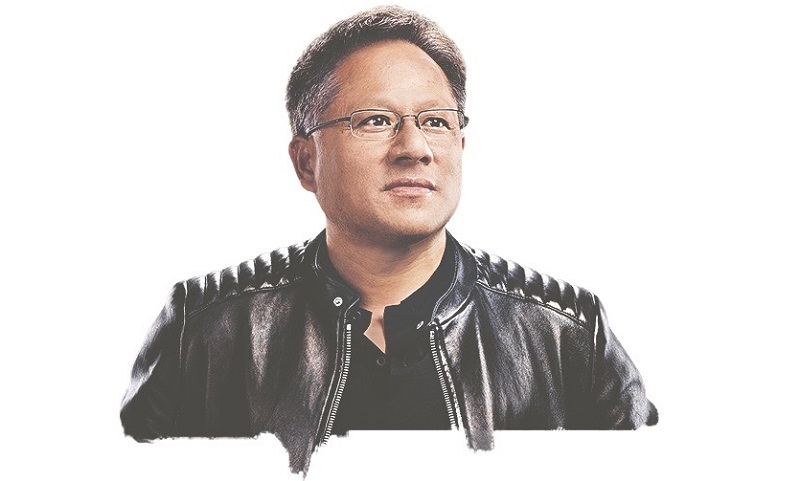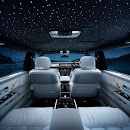Drivers who are guided by a navigations system will be familiar with a problem: if the lanes of a road are close together, the system cannot recognise which lane the vehicle is in. GPS is not precise enough for this - it can only determine the position to within two to 10 metres - but Porsche Engineering is working on a system that uses artificial intelligence (AI) to calculate a more precise position from GPS data. "This makes it possible, for example, to identify the ideal line on a race track," says Dr. Joachim Schaper, Senior Manager of Artificial Intelligence and Big Data at Porsche Engineering. The necessary calculations can be performed in the vehicle itself, in a compact computer equipped with graphics processing units (GPUs). "This brings AI functionality to the vehicle," says Schaper.
The hardware platform is manufactured
by Nvidia, based in Santa Clara, California. "When you hear the name,
you don’t necessarily think of the automotive sector," says Schaper.
Most PC users associate Nvidia primarily with graphics cards. Or rather:
especially fast graphics cards, such as those required for gaming. This
reputation dates back to the early 2000s, when the first games with
elaborate 3D graphics came onto the market. Those who wanted to play
games like Quake 3 or Far Cry without their screen jerking needed
powerful hardware. Among gamers, a favourite quickly crystallised: the
GeForce graphics card from Nvidia. It became a best-seller and
catapulted the company, founded in 1993, into the top ranks of hardware
manufacturers. At the turn of the millennium, the company was turning
over three billion US dollars.
AI researchers as new group of customers
In
the early 2010s, Nvidia noticed that a completely new group of
customers had appeared on the scene who were not interested in computer
games: AI researchers. Word had spread in the scientific community that
GPUs were perfectly suited for complex calculations in the field of
machine learning. If, for example, an AI algorithm is to be trained,
GPUs that perform computing steps in a highly parallel fashion are
clearly superior to conventional sequential processors (central
processing units - or CPUs) and can significantly reduce computing
times. GPUs quickly developed into the workhorses of AI research.
Nvidia recognised the opportunity earlier than the competition and brought the first hardware optimised for AI to the market in 2015. The company immediately focused on the automotive sector: the company’s first computing platform for use in cars was presented under the label Nvidia Drive. The PX 1 was able to process images from 12 connected cameras and simultaneously execute programmes for collision avoidance or driver monitoring. It had the computing power of more than 100 notebooks. Several manufacturers used the platform to bring the first prototypes of autonomous vehicles to the road.
Steady growth in the automotive sector
Initially, Nvidia relied on a pure hardware strategy and supplied the OEMs with processors. Currently, business in the automotive sector has two pillars: cockpit graphics systems and hardware for autonomous or computer-assisted driving. Sales in the automotive sector grew steadily between 2015 and 2020, but still represent a low share of overall sales. Last year, Nvidia’s sales in the automotive sector amounted to $700 million, which corresponds to a good six percent of total sales; however, sales are increasing by nine percent per year. Jensen Huang, Founder and CEO of Nvidia, sees great market opportunities here. "The cars of tomorrow are rolling AI supercomputers. Only two of the numerous control units will remain: one for autonomous driving and one for the user experience," he says.
To gain an even stronger foothold in
the automotive world, Nvidia has changed its strategy: the company no
longer focuses solely on chips, but offers a complete package of
hardware and software. "Customers can put together their own solution
and save on basic development," explains Ralf Herrtwich, Senior Director
Automotive Software at Nvidia. An OEM that wants to offer a
semi-autonomous vehicle, for example, can obtain both the hardware for
evaluating the camera images and pre-trained neural networks from Nvidia
- for example, one that automatically recognises traffic signs. Unlike
other manufacturers, this modular system is open. "All interfaces can be
viewed. The OEM can thus adapt the system to its own requirements,"
explains Herrtwich. In theory, a manufacturer can use pre-trained neural
networks from Nvidia and then combine them with in-house developments.
Nvidia products are System-on-a-Chip
Through
this strategy of openness, the American company aims to gain as many
OEMs as possible as users, which ultimately also drives the development
of the products. "We can best optimise our hardware if we know how it is
used," explains Herrtwich. He offers an example: most Nvidia products
are System-on-a-Chip (SoC). This means that a processor is combined with
other electronic components on a semiconductor. The automotive sector
uses chips with built-in video inputs to which external cameras are
connected. But how many inputs are needed? And how should the network
connection be designed? Such questions can only be answered in close
contact with the users, says Herrtwich. AI expert Schaper has a similar
view: "The input from other OEMs is important." In the current phase, it
is crucial to jointly accelerate the development processes.
In addition to hardware and software, Nvidia also offers closely cooperating OEMs access to its own infrastructure. For example, manufacturers can collaborate on training neural networks in Nvidia data centres, where thousands of GPUs work in parallel. After all, a self-driving algorithm must first learn to recognise a pedestrian, a tree, or another vehicle. To do this, it is fed millions of images from real traffic on which the corresponding objects have been manually marked. Through trial and error, the algorithm learns to identify them. This process requires a lot of work (such as labelling the objects) and requires high computer capacities. Nvidia handles both. Car manufacturers can thus access an artificial intelligence that has virtually been in school for several years.
Why GPUs are the better AI computers
GPUs are specialised in performing geometric calculations: rotating a body on the screen, zooming in or out. GPUs (graphics processing units) are particularly good at performing the matrix and vector calculations required for this. This is an advantage in the development of neural networks. They are similar to the human brain and consist of several layers in which data is processed and passed on to the next layer. To train them, matrix multiplications are key-in other words, exactly the specialty of GPUs.
In addition, these computer architectures have a lot of memory to store intermediate results and models efficiently. The third strength of GPUs is that they can process several data blocks simultaneously. The processors contain thousands of so-called shader units, each of which is quite simple and slow. However, these computing units can process parallelisable tasks much faster than conventional processors (central processing units, CPUs). When training neural networks, for example, graphics processors reduce the time required by up to 90 percent.

























